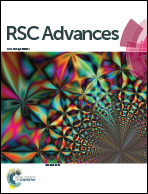The potential use of recycled PET bottle in nanocomposites manufacturing with modified ZnO nanoparticles capped with citric acid: preparation, thermal, and morphological characterization
Abstract
We devised a fast and facile potential practical application by incorporating the guest ZnO nanoparticles (NPs) into poly(ethylene terephthalate) (PET) as a host polymer that recycled by dissolution/reprecipitation method. Due to the high surface energy and tendency for agglomeration, surface of ZnO NPs was treated with biocompatible citric acid (CA) molecule. Different NCs of organo-modified ZnO NPs (1, 3, 5 wt%) and PET were constructed by means of an ultrasonic process. The resulting hybrid NCs were characterized by Fourier transform infrared spectroscopy, UV-Vis spectroscopy, X-ray diffraction, field emission scanning electron microscopy, transmission electron microscopy and thermogravimetric analysis. From TEM images, it can be found that the surface-treated ZnO/CA NPs with diametric size of about 21 nm, uniformly dispersed in the recycled PET matrix and led to distinct properties. FE-SEM photographs of sonicated recycled PET in ethanol and DMAc were approved solvent effect.


 Please wait while we load your content...
Please wait while we load your content...